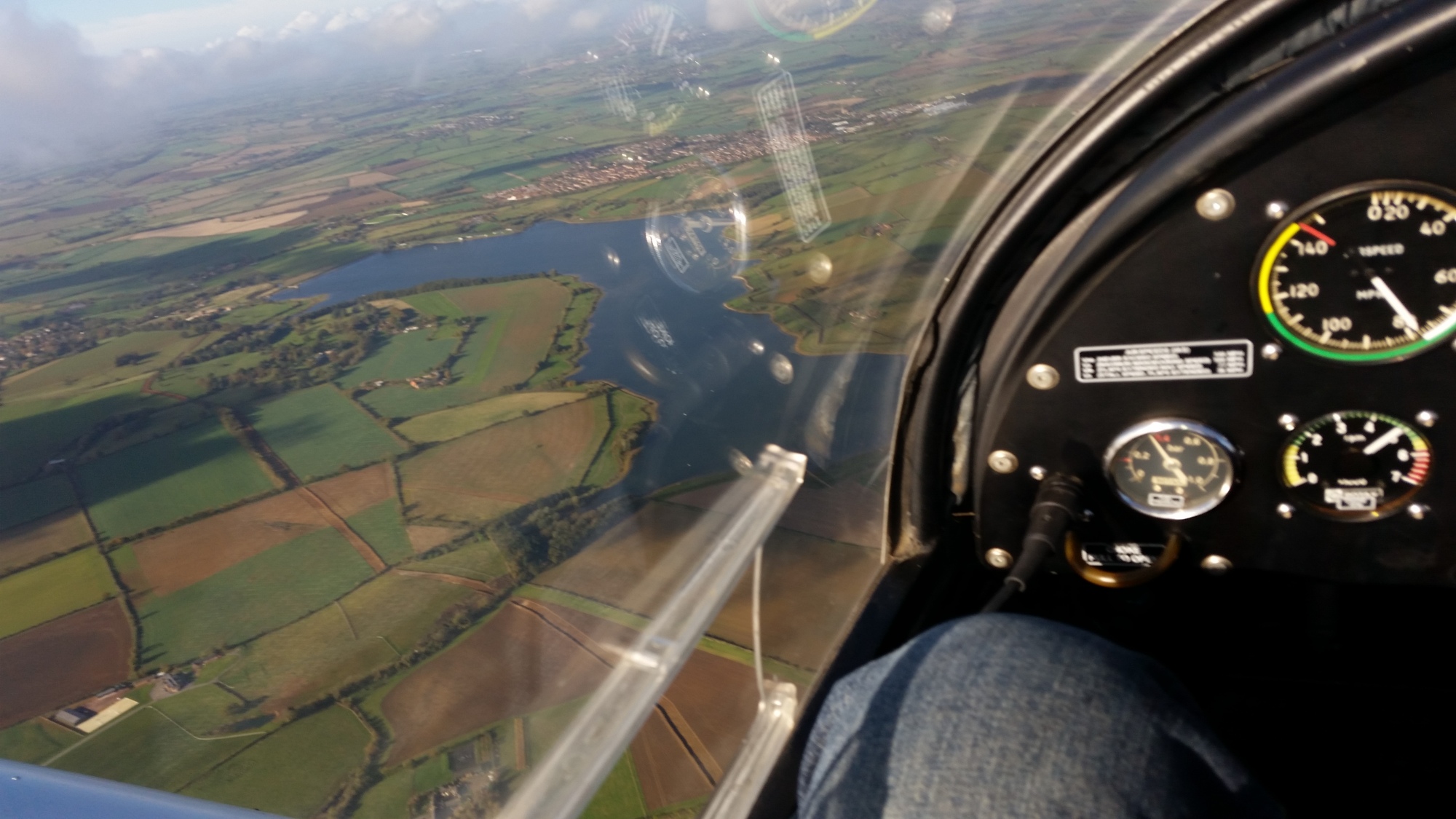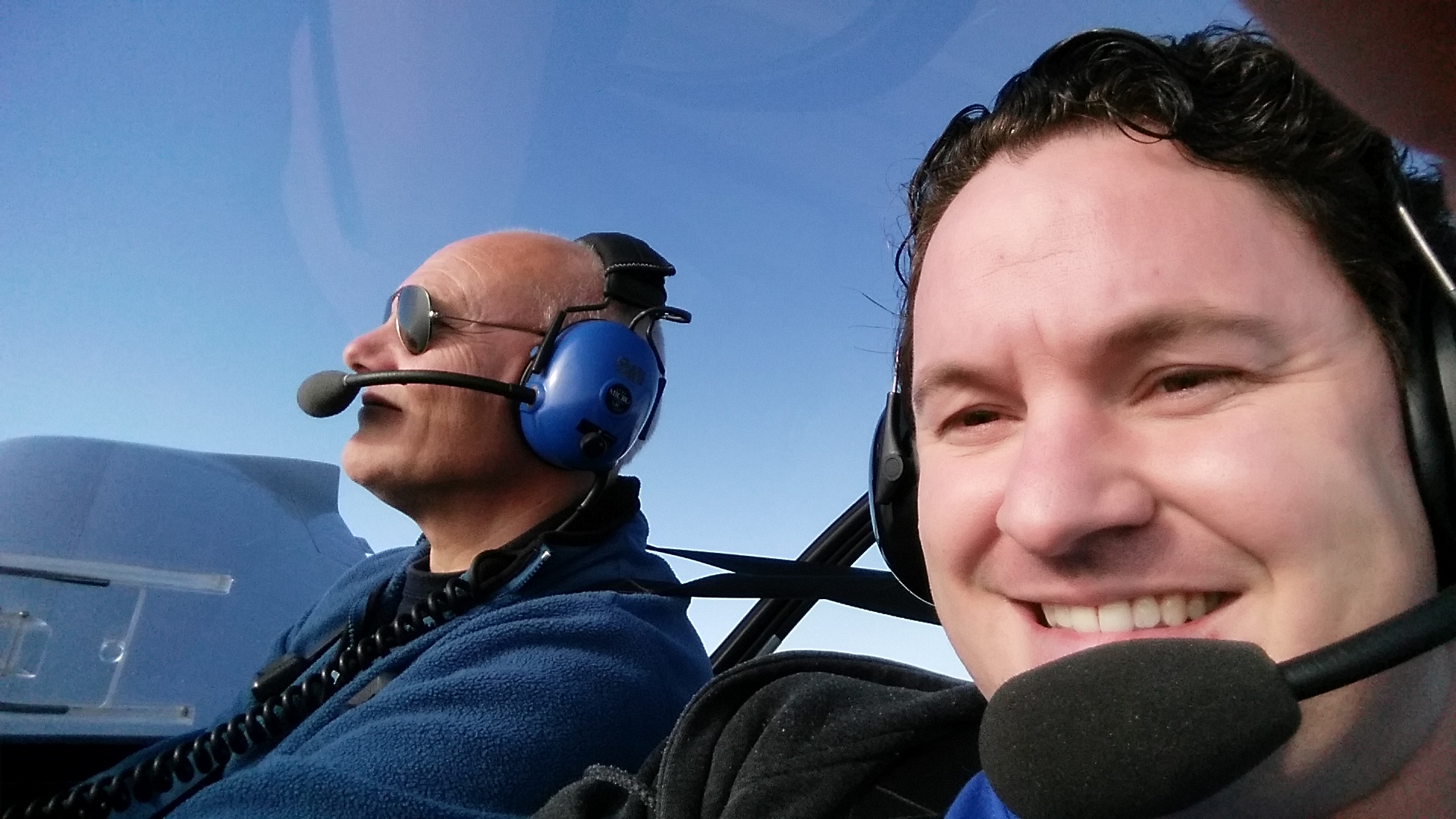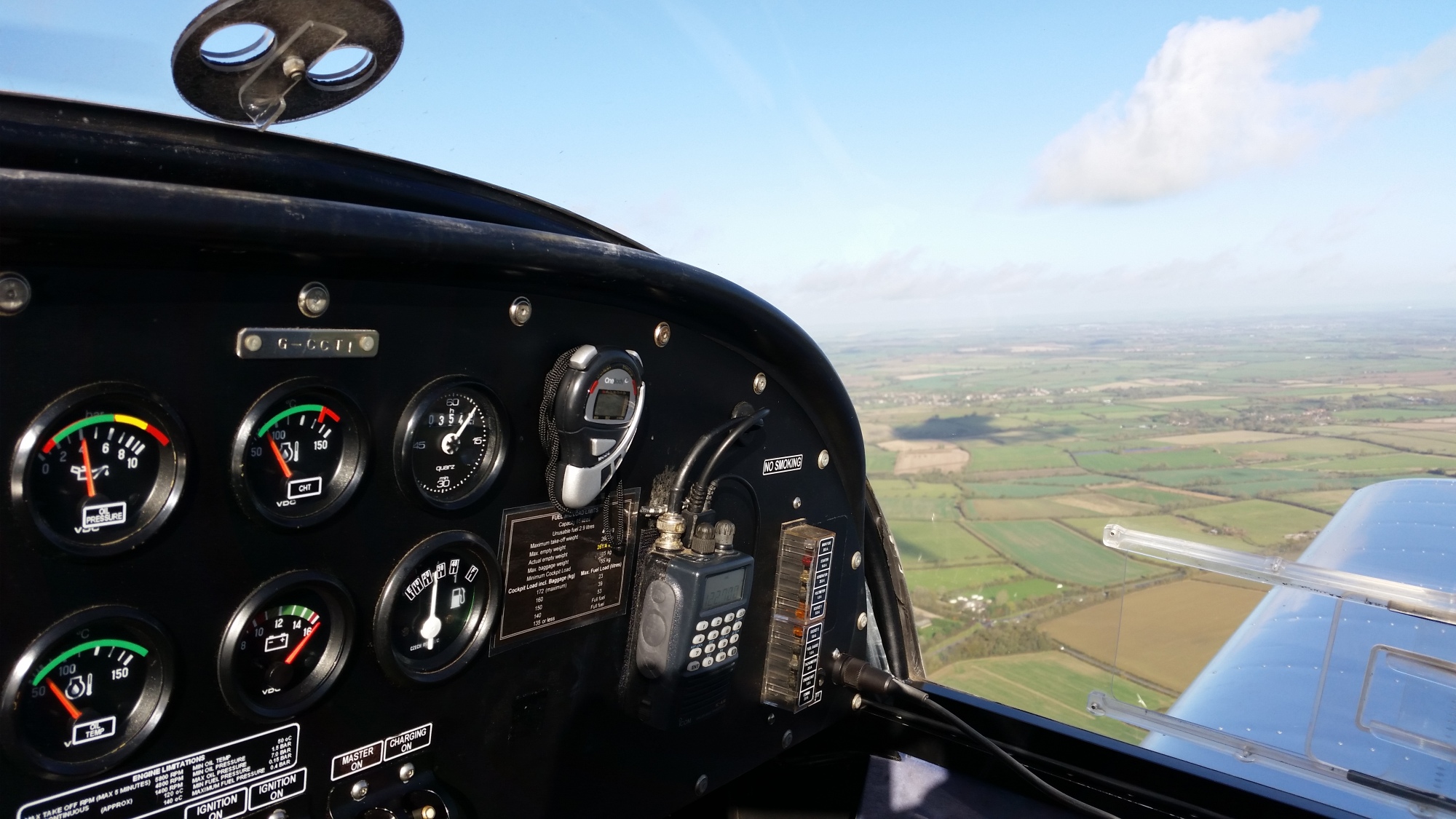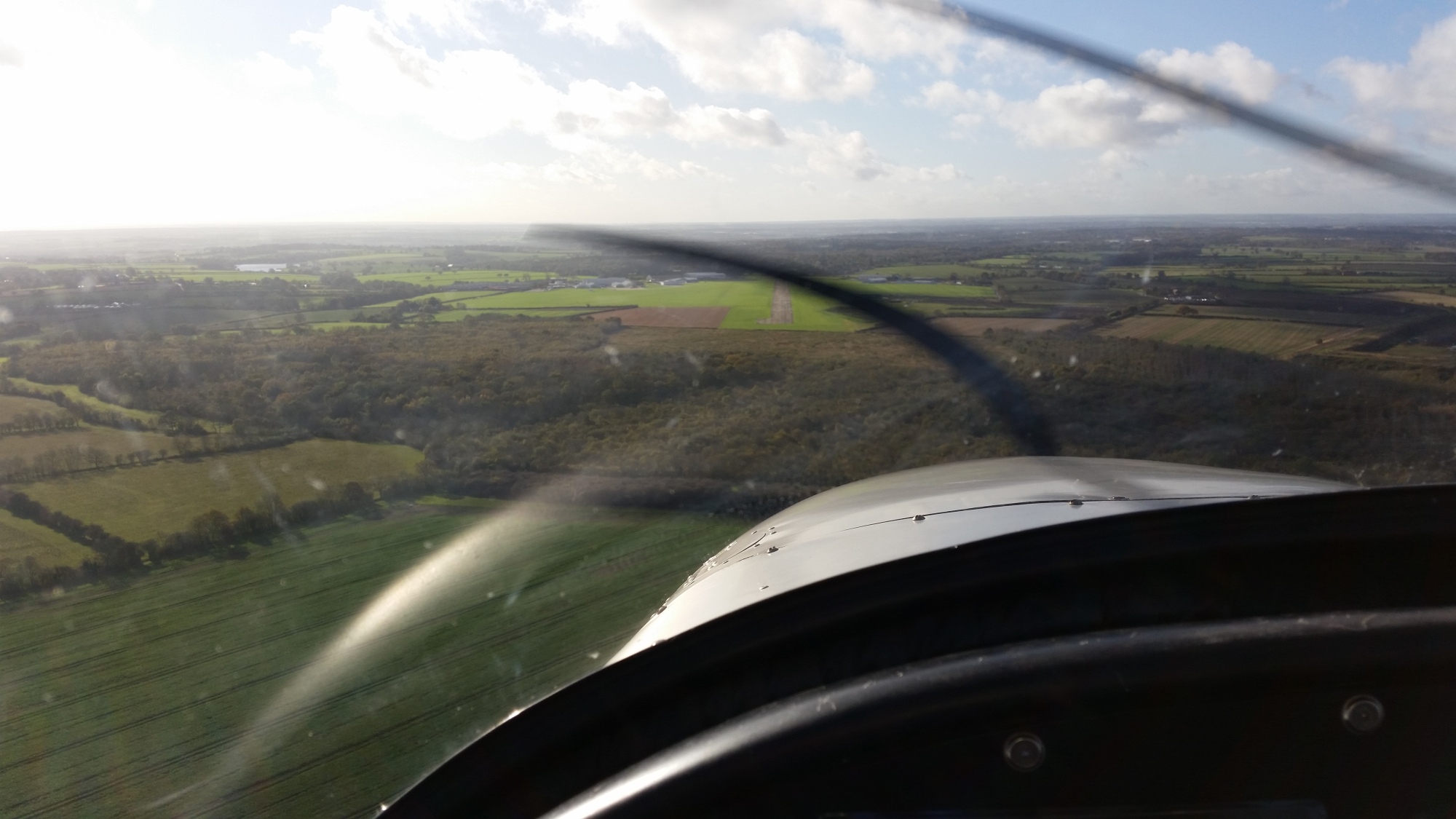Archive
Flying in a fixed wing microlight
On a warm and sunny November morning I had my first experience of flying in something other than a commercial aircraft. And wow, what a fantastic experience!
It all started when my wife got me a voucher from Experience days to have a quick 20-30 min flight in a microlight. This was via a local company called Flylight based at Sywell Aerodrome just up the road from where I live in Wellingborough.
I believe it was in the region of £80 for the flight which is fairly expensive but after having the flight I can recommend is well worth the cost!
Fixed wing and flexwing
When booking I had the choice of flying in a fixed wing microlight or a flexwing microlight – both sometimes known as ultralights.
Phil, who I had as my instructor, explained the difference between the two is like comparing a car to a bike:
- The flexwing is your traditional looking microlight where you sit in an open tandem seat (one behind the other) trike slung underneath a hang-glider type wing. It’s open to the elements and is the aircraft for that wind in your hair feeling – basically an airborne motorcycle. These aircraft use a system called weightshift which involves the pilot moving the weight of the trike unit, the body of the aircraft, under the wing to control its speed and direction.
- Whereas the fixed wing looks like a conventional light aircraft and feels more secure inside. It’s the choice if you want the luxury of a heater and the security of having a door between you and the outside world. The controls are like those on a conventional aircraft, which are operated by a control stick and pedals.
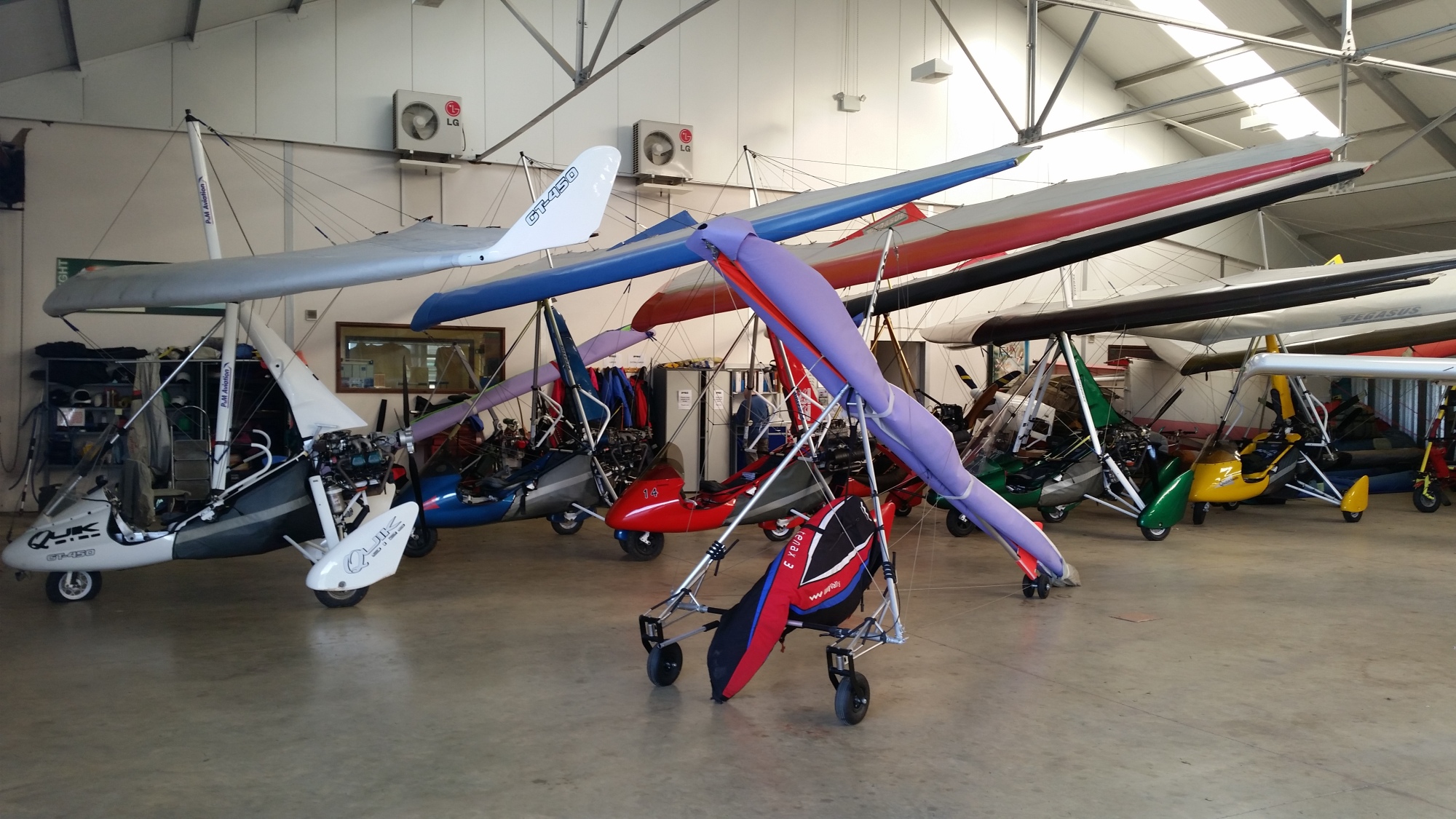
All the flexwing microlights were gathered across the other side of the hanger. Bit flimsy looking if you ask me…
To be classified as a Microlight the aircraft has to have a maximum weight not exceeding 450kg. This includes aircraft, pilot, passenger, fuel and luggage.
Due to availability and the date I wanted to fly I flew in a fixed wing. I think if I had another go I’d definitely like to try the flexwing to compare the experience.
Getting started and pre-flight checks
After arriving and filling out my details on an insurance document, I met my instructor Phil who was a really easy going, talkative chap. He was really great and quite willing to answer all the many questions that I had! He had been flying since the mid 90’s and was an instructor as well as an examiner for pilots wishing to train and get their microlight flying licence.
After speaking about the microlights in the hanger we then moved the microlight we’d be flying out onto the grass. This was a Aventador EV-97 Eurostar, which is a two-seat, light sport aircraft (LSA), manufactured by Evektor-Aerotechnik of the Czech Republic and powered by a Rotax 912ULS, 100 horsepower (75 kW) engine.
They’re so light these aircraft – only 250KG and a doddle to move and push out of a hanger! If you imagine a small car like a polo weighs 1100KG you can see why.
Climbing into the microlight is easy and involves standing on the wing before stepping into the snug cockpit. You just have to watch you don’t tread on the edges of the wings as you’ll easily damage them.
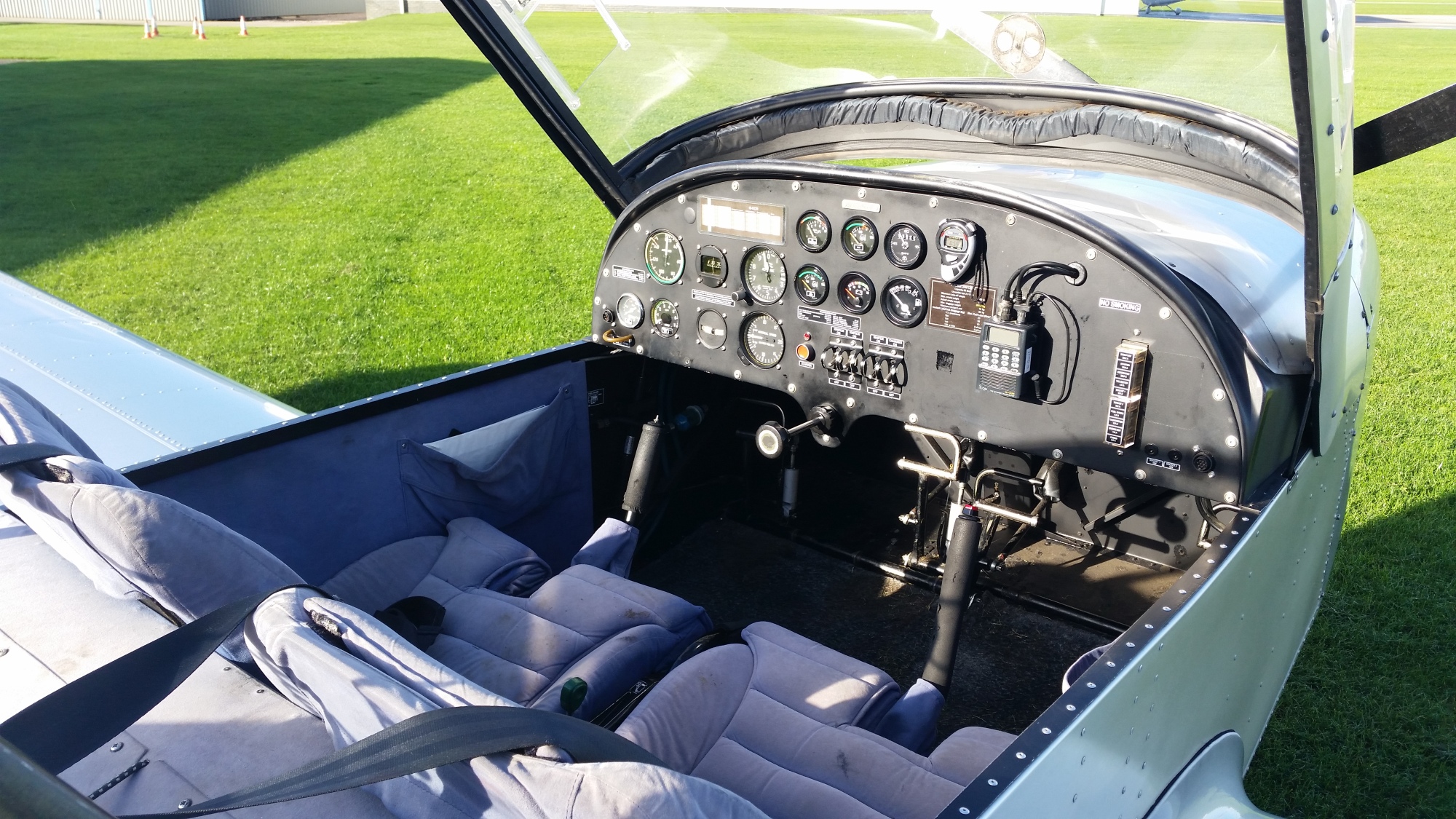
The controls inside the cockpit. Notice the two control sticks in front of each seat. “Make sure you don’t touch it whilst we take off!” I was instructed. Gulp, yes sure!
After strapping ourselves in tight we then went through pre-flight checks such as ensuring everything was secure, the instrument readings were correct, we had enough fuel and so on.
He then also explained the instruments in front of us, plus the fuel stop, choke and how to release the glass cockpit cover using the catch behind our head.
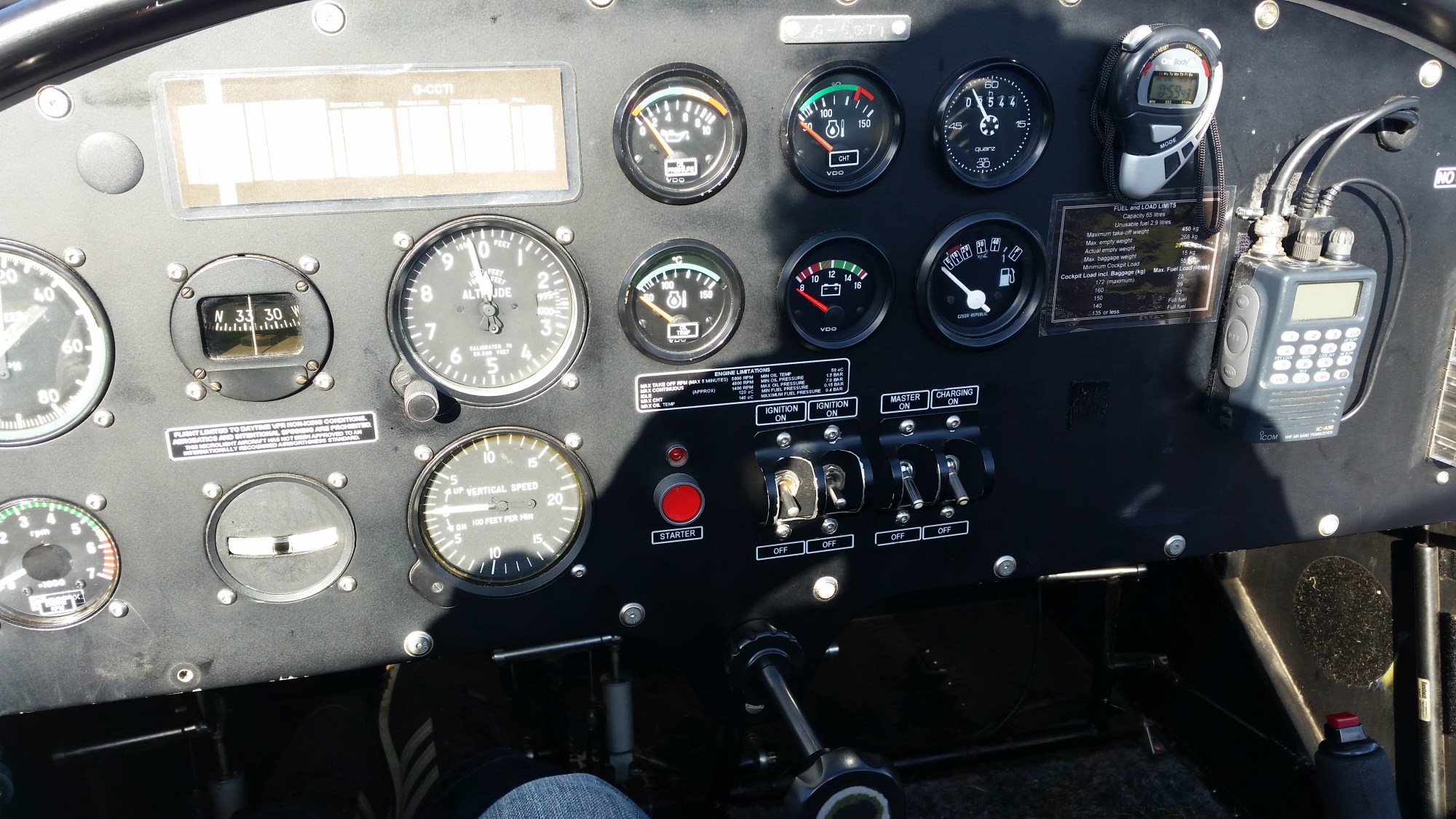
I asked if it was true that you should be able to fly only using the controls and Phil said nah – they can go wrong so it’s mostly done by sight.
The microlight has dual controls meaning both seats have a joined control stick (often called the joystick) that you have between your legs. So as he moves his control stick, you have to watch out your own legs don’t get in the way of the one in front of you which follows the same movements. There’s also pedals in front of both seats that control the flaps of the aircraft. So again I had to make sure my feet were well clear.
We also put on our headphones with microphones and checked to ensure they worked and that we could talk easily to each other. Phil also popped on his regulatory Aviator sunglasses!
Taxiing and take off
After speaking to the local air traffic control tower, which to me was nearly undecipherable – “Golf Charlie Charlie Indigo cross 3/3 to 2, 400ft proceed to take off” or something like that, which basically meant our call sign, that we could cross another runway to take off at runway 2, we were 400ft above sea level, plus details about the air density and so on.
We bounced across the grass to the end of what he described was a run way. To me it was just a big field! Phil pointed out that there are lines on the field that show the direction of take off and landing, but depending on the wind direction you sometimes even take off and land at right angles. Ideally the aim is to always take off and land going into or with the wind.
There was one concrete strip over on the far side which we would actually use later to land, but for now we’d been given instructions to take off from the grass. So the grass it was!
To take off the engine goes to full power, which even with the headphones on you could tell would be a noisy affair. The aircraft picks up speed rapidly and shoots along the ground and then you’re up. It’s amazing how quickly you’re in the air and nothing like taking off in a commercial aeroplane. It felt like we only needed about 100 metres or so before we had enough speed to take off. I did look into this after our flight and it’s only “an unrestricted 400 metre strip required for safe operation”.
Microlights are so light they climb really quickly – apparently 1,000 ft an hour. So before you know it the ground has dropped away and you’re quickly getting a great birds eye view over the air strip and the surrounding buildings. Your stomach doesn’t feel queasy at all when climbing. Even though you can tell you’re rising quickly it’s all very smooth and calm.
Aventador EV-97 Eurostar
The Aventador EV-97 Eurostar we were in apparently can go up to 17,000 feet max. However the optimum height for flying and that which we’d get to is 2-3,000 feet. Above 6,000 ft the aircraft needs to use leaded petrol rather than unleaded (which can separate due to pressures). If you were to go above 10,000 ft you’d need oxygen!
They travel at about 110 knots which is about 125 mph (204 km/h) and with a range of about 800 miles, it’s quite feasible to get in one and pop over to say France for the day. Which to me sounds great though you have to bear in mind they can only fly during the day and not at night.
Apparently to buy them out right they cost about £75,000. Additional running costs are the ‘hangarage’ (storage costs) and the unleaded petrol (the microlight uses about 10 litres an hour of unleaded fuel) amongst other costs.
The experience of flying
When up in the air the feeling of flying is amazing. You get a great sense of freedom. The view is fantastic. It’s really quite relaxing.
.
The aircraft is amazingly stable. There’s nowhere near the sudden drops that I thought we would regularly experience or the feelings like you may get on a roller coaster. There’s was only one point where I felt my heart was in my mouth after we hit an air pocket and we dropped suddenly. But otherwise it felt safe as houses up there!
Being in control and flying
I was even given the controls to fly the microlight for 10 minutes or so!
To do so is very easy and intuitive. Push forward on the control stick and the microlight starts to pitch forward gently and you start to descend. Pull it towards you and the nose rises and you start to ascend.
Push right and the plane pitches to the right. If you were to continue to hold the control stick the plane would continue to pitch more and more severly to the right until you went into a barrel roll! So instead what you do after initially pitching right and starting to turn you return the controls back to the centre position. The microlight would then continue to turn right at the same gentle rate until you move left on the control stick to return the microlight to a horizontal position.
Sounds very easy right? Well all I used was the control stick. Phil was continually using the pedals in front of us to use the flaps. These essentially stop the plane from sliding or skidding through the air. He even demonstrated what happened if they’re not used. The wind which can be hitting you diagonally pushes the nose in a different direction to what you’re actually travelling! So what happens is you’re looking out of the side window in the direction the plane is flying just like being in a car that’s skidding! There’s an instrument in the cockpit called the slip ball that shows what skid the aircraft is experiencing and so what pedals you should use to straighten the craft. Fascinating eh?

See the instrument with the horizontal white line just to the bottom left off the centre of the picture? That’s the slip ball. The idea is to keep the rolling black cursor in the middle of the line.
We swooped gently around the few clouds that were in the sky and at the same altitude we were at. It was at this point I realised there was no radar. So it’s just a simple case of watching out for other aircraft in the sky. Not sure how that works when it’s really cloudy. I avoided the clouds where I could and simply found the spots to fly between them.
If you were wondering, microlights simply aren’t cut out for doing aerobatics like loop the loops or barrel rolls and the like. Something I was quite glad of!
Landing the plane
After all too short a time it was time to fly back to the aerodrome and land. What we did is fly until we were over the airstrip and then turn to the right. He reduced the throttle and I felt the plane obviously slow. What you then do is follow a square shape whilst descending to approach the concrete landing strip in a set way and land.
I asked Phil if it was true that landing was by far the hardest thing for a pilot and he agreed, joking that it was basically a controlled crash! He then showed though what an adept pilot he was and proceeded to land the softest landing I’ve ever experienced.
He even showed off a bit and we flew down the run way a few feet off the ground for a few hundred metres. I couldn’t even feel it when we did touch down. After that he then pulled the nose up and wheelied down the runway for a few more hundred metres!
As we got to the end he slowed and took a taxi lane off to where our hanger was. We then bobbed over a bit of grass before coming to a stop.
Becoming a pilot
I did ask about what was needed to become a pilot, but to be honest I was buzzing so much after the flight that I can’t remember much of what Phil said!
I think it was generally in the region of £4,000 to get a microlight pilots licence which includes all the training costs. After that you need to fly 12 hours every 24 months – which doesn’t sound much in time or money really.
Syndicates to jointly own a microlight and have fair access to it I thijk styared at about £30 a month
I think if I had money to burn when I got older, I’d definitely invest in this instead of say getting a motorbike. Same sort of costs, but far safer and just as fun!
Ethendras
This is the personal blog for Jim Atkinson / Ethendras and is full of various ramblings about the world we live in.
I am an experienced web designer, e-learning developer and IT trainer and work as a Staff Development Trainer and E-Learning Developer for the University of Northampton, UK.
See my Jim Atkinson Google+ profile for more about me including details of my personal web design site at www.jimatkinsonwebdesign.co.uk offering professional, affordable websites for sole traders and small businesses.
Top Posts & Pages
- Habanera - French to English translation of the famous aria from the opera Carmen by Georges Bizet
- 25 of the best Tommy Cooper gags, jokes and one liners
- The 5 best men's fragrances - aftershaves, EDTs and colognes
- What's it like to go to the BrewDog AGM? - an unofficial write-up of #brewdog #punkagm2016
Recent Posts
- FIFA 2023 PlayStation PDF controls guide
- The Best UK Craft Ale Breweries 2018 – a map detailing the best breweries in the UK (and some beyond)
- Feel the love for Electric Six – videos from their album Fire
- A Google Map of all 2017-18 English football clubs from the Premier League down to the National League
- What’s it like to go to the BrewDog AGM? – an unofficial write-up of #brewdog #punkagm2016
- Slowly falling in love with Evernote – ideas for using it effectively in real life
- Buckminster Fuller’s Dymaxion Map
- Why do toothbrushes fall over so easily?
- memoryfm.es
- 3 little pigs – the first little pig poem
- Games Workshop Warhammer Fest, Sat 11th and Sun 12th October 2014
- Stone Age Acrostic Poem
- The 5 best men’s fragrances – aftershaves, EDTs and colognes
- Flying in a fixed wing microlight
- Who or what is the best Skylander?
- Feel the love for Darwin Deez
- Grammar: all the interesting bits you’ve probably forgotten
- Covers just waiting to be hits
- My Ethendras blog 2012 review – a cool little annual report from the WordPress crew
- The speed of cars vs. wildlife
- Miniland at Legoland Windsor
- 5 reasons why you should listen to NoFX (as they are one of the best punk bands ever)
- Reading binary code
- Know Pun Intended: 30 top puns and one liners
- Big big BIG numbers: googols, centillions and googolplexes
- Habanera – French to English translation of the famous aria from the opera Carmen by Georges Bizet
- 25 of the best Tommy Cooper gags, jokes and one liners
- Morrisons supermarket’s website: the art of not giving the customer what they need
- 25 Bestselling Premium WordPress Themes in 2012
- Never argue with an Idiot: plus other advice to follow throughout life
- Enjoying the sights and sounds of Borough Market, London
- Compus Minkus: Music For the Eclectic Connoisseur
- Renault Avantime: the return of an icon?
- Caipirinha: a highly recommended cocktail
- Richard Madeley IS Alan Partridge
- FIFA11 PS3 Tricks Tutorial PDF: The handiest one you’ll ever own
- Bring back Rootjoose
- 7 reasons why Lana Del Rey is (one of) the sexiest female solo artists around
- Funky websites and technology as endorsed by me
- Gorgeous whites and the summer sun
- Lattice ‘Roman’ Multiplication
- Move over Tasbasco, there’s a new daddy hot sauce!
- Greatest Dance Crazes – as liked by me!
- Autocar vs. Top Gear vs. Evo
- Car models that should exist
- New job
- A fun day out in Cambridge
- Hunting for Witches
- Wedding gifts poem
- Cakes, glorious cakes!


